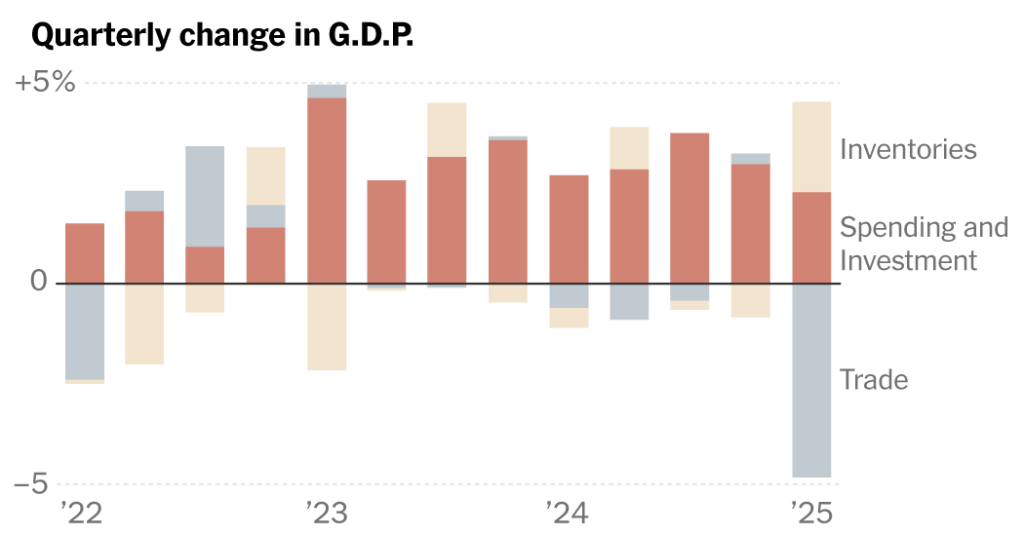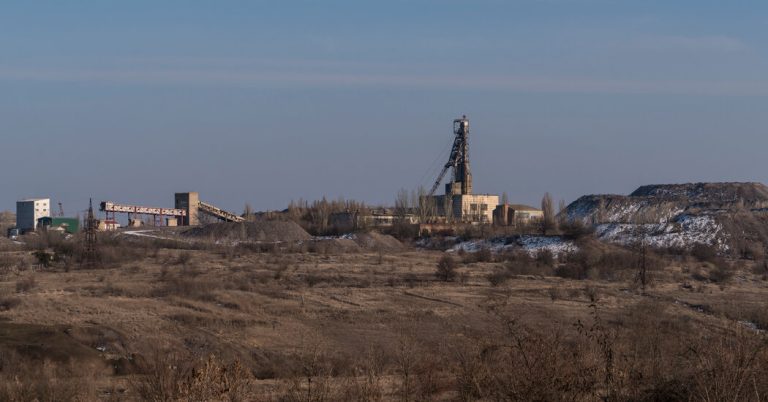President Trump’s tariffs have roiled financial markets and upended global trading patterns. Now they are disrupting measures of economic growth as well.
U.S. gross domestic product, adjusted for inflation, declined at an 0.3 percent annual rate in the first three months of the year, the Commerce Department said Wednesday. It was, on the surface, a stunning reversal from the strong growth at the end of last year, when the economy expanded at a 2.4 percent rate.
But the first quarter figure was misleading, the result of quirks in the way government data measured the surge in imports as businesses and consumers raced to get ahead of expected tariffs. More reliable data on consumer spending and business investment suggested that growth slowed in the first quarter but remained fundamentally solid.
That strong foundation could be quickly eroding, however. The first quarter data showed early signs of the disruptions caused by Mr. Trump’s tariffs — and that was before the full extent of those policies became clear. Forecasters widely expect spending and investment to slow in the months ahead, as tariffs drive up prices and uncertainty keeps businesses on hold.
“There’s a lot of reasons to expect the underlying trends in the U.S. economy to soften,” said Ben Herzon, an economist at S&P Global Market Intelligence.












